
 |
Istanbul - Kandilli Observatory, Blue Mosque and Basilica Cistern, 3/30/2006
|
|
|
 |
|
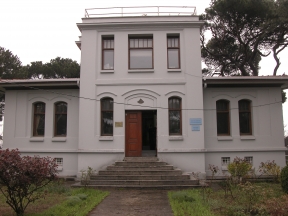
Kandilli Observatory402 viewsOur first stop after landing in Istanbul was the Kandilli Observatory, or more formally known as the Kandilli Observatory and Earthquake Research Institute, affiliated with Boĝaziçi University of Istanbul.
|
|
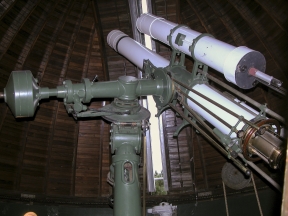
Kandilli Observatory Telescope454 viewsThis venerable 200 mm Zeiss refractor was located in the dome atop the Observatory. It was purchased in 1918, delivered in 1924, and became operational in 1935 with the completion of the observatory building.
|
|
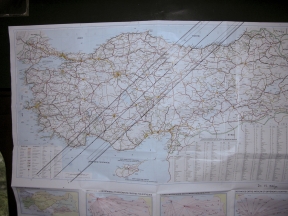
Path of Totality486 viewsThis large map shows the path of totality of the 2006 eclipse across Turkey. Istanbul was not in the path, so the observatory saw only a partial eclipse.
|
|
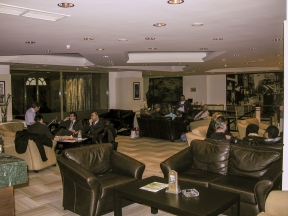
Richmond Hotel Lobby434 viewsLocated on Istiklal Street in the Beyoĝlu district of Istanbul, the Richmond was well-placed to optimize our navigation of the city.
|
|
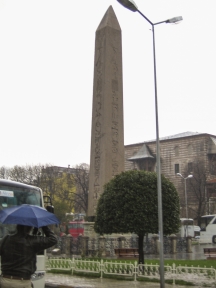
Obelisk of Theodosius I409 viewsOriginally erected at Karnak by Pharaoh Thutmose III in the 15th century BC, and moved to Constantinople by Emperor Theodosius I in 390 AD. It stands in what used to be the Hippodrome and is now Sultan Ahmet Square.
|
|
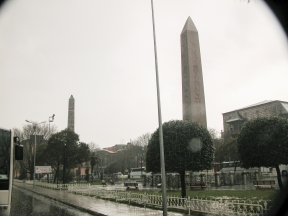
Sultan Ahmet Square393 viewsAt the end of the square opposite the Obelisk of Theodosius I, seen in the foreground, stands the Walled Obelisk, built in the 10th century by the Byszantine Emperor Constantine Porphyrogenitus. The Walled Obelisk was originally covered with bronze plaques, but these were plundered by the Latin occupiers during the Fourth Crusade, and now only the stone core remains.
|
|
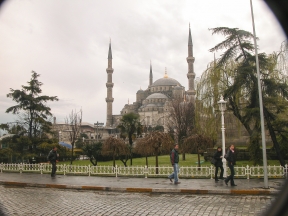
The Blue Mosque367 viewsThe Blue Mosque was built on the site of the Grand Palace of the Byzantine Emperors. Sultan Ahmed, who caused it to be built, felt it necessary to reassert the might and grandeur of the Ottoman Empire in a time of serious military reverses during the early 17th century.
|
|
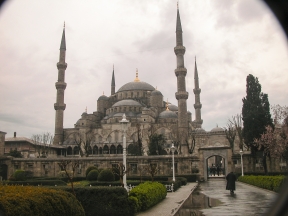
Minarets of the Blue Mosque371 viewsThe Blue Mosque has six minarets, not all of which are seen in this picture. It caused an uproar among the Islamic ulama (Muslim jurists), who were scandalized that it had as many minarets as the Grand Mosque in Mecca. Sultan Ahmed assuaged their ire by causing a seventh minaret to be built for the Grand Mosque.
|
|
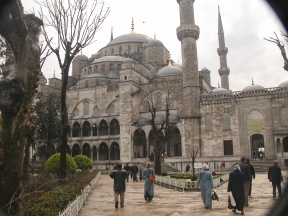
Approaches to the Blue Mosque437 viewsThe Blue Mosque was intended to demonstrate that Islamic architects could build structures to rival Hagia Sophia in size and majesty.
|
|
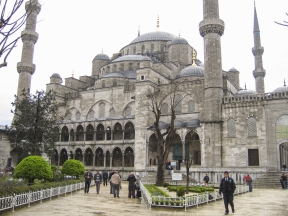
The Blue Mosque - Architecture397 viewsThe Blue Mosque incorporates elements of both Byzantine and Islamic architecture, resembling in some respects its neighbor, Hagia Sophia.
|
|
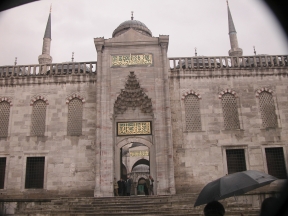
Entrance to the Blue Mosque414 viewsAdmission to the Blue Mosque is obtained through the forecourt, which itself is entered via this imposing gateway.
|
|
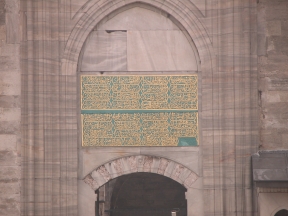
Gateway to the Forecourt431 viewsDecorated with the names of the Caliphs and verses from the Koran by the great 17th-century calligrapher Seyyid Kasim Gubari.
|
|
|
|

|